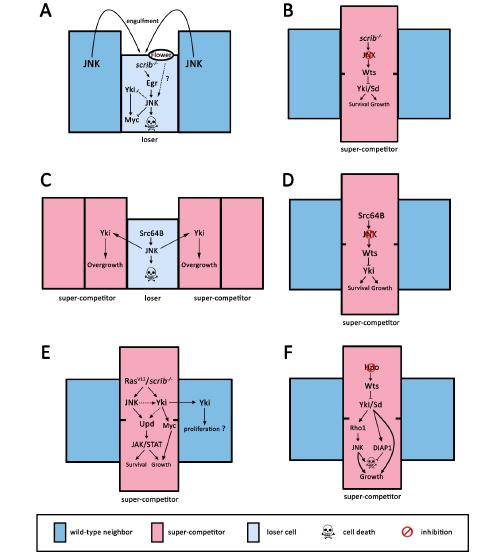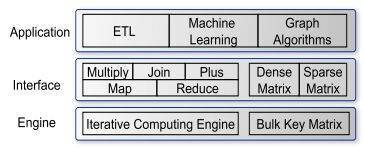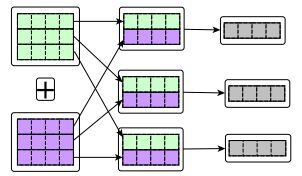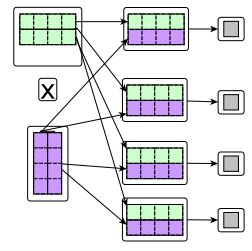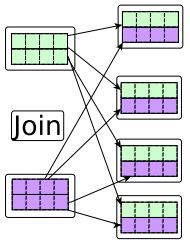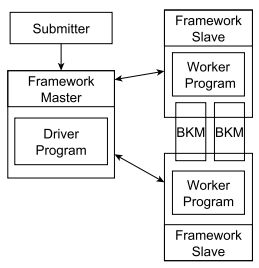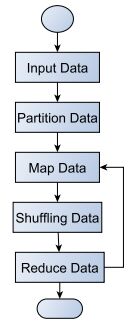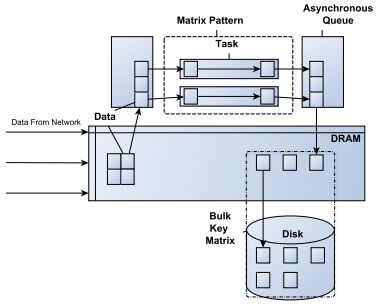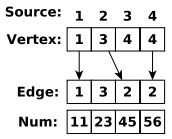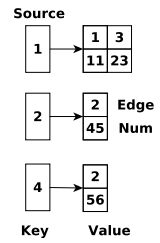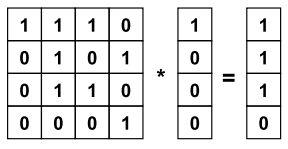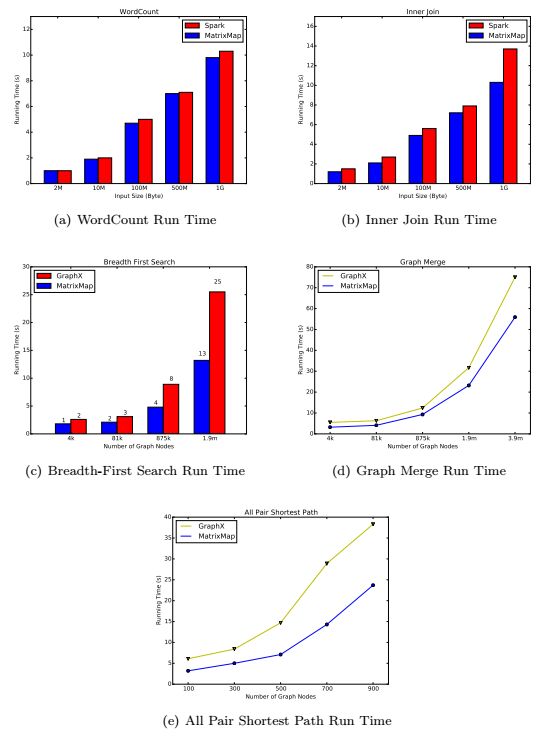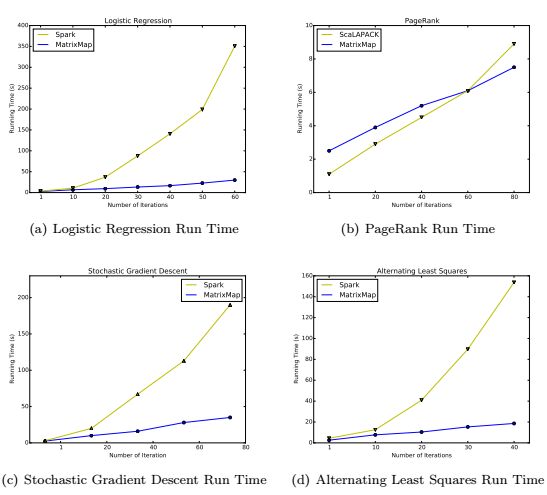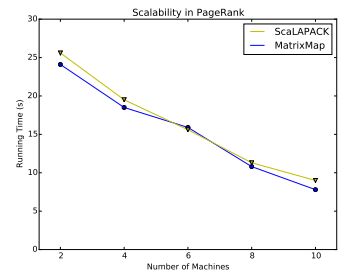1. Introduction
1.1. The Hippo signaling pathway
The Hippo pathway was initially identified by genetic screens for growth regulating genes in Drosophila melanogaster. Recent studies have uncovered its function as a highly conserved tumor-suppressor pathway which plays essential roles in regulating multiple aspects of tumorigenesis, including cell growth, proliferation and survival [1,2,3]. The first identified four core components of Hippo pathway are the NDR family kinase Warts (Wts), the Ste20-like family kinase Hippo (Hpo), the WW-domain containing protein Salvador (Sav), and the adaptor protein Mob-as-tumor-suppressor (Mts) [4,5,6,7,8,9,10,11,12]. Hpo complexes with Sav to phosphorylate and activate Wts, which in turn, in conjunction with Mts, directly phosphorylates the transcriptional co-activator Yorkie (Yki), resulting in its cytoplasmic accumulation and activity inhibition [9,13,14]. Once the Hippo pathway is deactivated, Yki can translocate into nucleus to partner with different DNA-binding transcription factors, including the TEAD/TEF family transcription factor Scalloped (Sd) [15,16,17], to activate the transcription of many cell growth and viability regulating genes, such as cyclin E (cycE), expanded (ex) and Drosophila inhibitor of apoptosis protein 1 (diap1) [1,3]. In short, cells with reduced Hippo signal or increased Yki activity overgrowth [1,4,5,6,7,8,9,10,11,12,13]. So far, over 20 Hippo pathway regulators have been identified in Drosophila [18], and overwhelming evidence in mammals has further confirmed their conserved roles in regulating tumorigenesis and cancer development [2,19,20].
1.2. The JNK signaling pathway
The c-Jun N-terminal Kinase (JNK) pathway represents another key conserved eukaryotic signaling pathway. Initially identified as a stress-activated protein kinase (SAPK) [21], JNK can be activated by various stimuli ranging from UV irradiation to DNA damage, bacterial infection, and cytokines [22,23]. Upon stimulation, JNK will be activated by the mitogen-activated protein (MAP) phosphorylation kinase cascade composed of different members of JNK Kinase Kinases and JNK Kinases (JNKKKs → JNKKs → JNKs) [23]. Then JNK translocates into the nucleus to phosphorylate and activate the prototypical transcription factors including AP-1 family members Jun and Fos [24]. In Drosophila, the JNK pathway is much simpler than in mammals, with only a single JNK (Basket, Bsk) and two JNKKs (Hemipterous, Hep and MKK4) [25]. In the past 18 years, increasing studies have revealed that JNK pathway is involved in a wide range of cellular processes including proliferation, cell competition, regeneration, survival and tumor progression [23,26,27]. Notably, unlike Hippo pathway, recent studies in Drosophila discovered that JNK activation can lead to tumor suppression or tumor progression depending on the context [28,29,30], which will be discussed in this review.
2. Crosstalk between Hippo and JNK signaling
2.1. Gut homeostasis and regeneration
Drosophila gut is under constant attack due to exposure to different pathogens and chemical stimuli during normal feeding. In order to maintain gut homeostasis, intestine stem cell (ISC) proliferation is required to ensure the replenishment of damaged cells [31,32], while disruption of this process would cause diseases including cancer [33]. Drosophila midgut epithelia is mainly composed of four cell types, namely ISC, enteroblast (EB) cells, absorptive enterocyte (EC) cells, and secretory enteroendocrine (ee) cells. The ISC division gives rise to a new ISC and enteroblast, the later further differentiates into either an absorptive enterocyte or a secretory enteroendocrine cell, based on the level of Notch signaling [34]. For the past decade, extensive studies using Drosophila midgut have uncovered a signaling network that maintains the homeostasis of gut epithelia, including Hippo and JNK pathway [35].
As a major stress sensor, JNK can be activated both in EC and ISC by bacterial infection or DNA damage to stimulate non-autonomous and autonomous ISC proliferation, respectively [36,37,38,39,40]. In the EC cells, JNK activation via Puc (a phosphatase which inhibits JNK activity) RNAi or Hep overexpression increased ISC mitosis [38] and resulted in nuclear Yki translocation and Hpo target genes expression [36,41], which could further trigger secretion of the Unpaired (Upd) cytokines to drive non-autonomous ISC proliferation through JAK/STAT signaling pathway (Figure 1) [36,40,41]. Moreover, JNK activation in the progenitor cells of Drosophila midgut is sufficient to upregulate Wg expression, which in turn induces Myc-dependent ISC renewal (Figure 1) [42].
In addition, JNK and Hippo signaling have also been shown to regulate ISC proliferation in an autonomous manner [39,40,41,43]. Reducing JNK activity within ISCs significantly blocked Ecc15 (Erwinia carotovora carotovora 15, Gram-negative bacteria) infection and paraquat-induced proliferation [37,44], whereas ectopic JNK activation by Hep or Rac1 (small GTPase acting upstream of JNK) overexpression promoted ISC self-renewal [39,45]. Similarly, silencing yki reduced excessive ISC proliferation induced by Gram-negative bacteria Pseudomonas entomophila (P. e) [41], while inactivation of Hippo signaling had an opposite effect [40,41]. Additionally, Ren and colleagues recently identified Myc as a crucial integrator of multiple signaling including Hippo and JAK/STAT in ISC regeneration (Figure 1) [46]. Importantly, unlike Myc, neither Yki nor JNK inhibition reduced ISC number under normal condition [36,43,44,46], highlighting their essential role as stress sensors in gut epithelia.
2.2. Regeneration in wing disc
JNK signaling activation has been considered as a universal hallmark of regenerating tissue in response to damage [47,48,49]. Besides, it is also shown that JNK plays critical roles in apoptosis-induced non-autonomous compensatory proliferation [50], which could accelerate the regeneration process. Two recent studies revealed that Hippo pathway also regulates regenerative growth in Drosophila wing disc. They found that Yki functions as a pivotal determinant for regeneration, as removing only one copy of yki could dramatically impair regenerating ability, while does not affect normal wing development [51,52]. Furthermore, activation of JNK by ectopic expression of Eiger (Egr, the Drosophila TNF homolog) or HepCA (a constitutive form of Hep) could induce Yki nuclear accumulation and target gene expression, both autonomously and non-autonomously [51,52]. In the former situation, JNK upregulates Wg secretion as well as Yki target gene expression, while it simultaneously triggers extensive cell death which may counteract the Yki induced growth advantage. In the latter scenario, JNK might propagate into neighboring cells [53] to induce non-autonomous compensatory proliferation via activation of Yki, Wg, Dpp, and Myc [18,50,51,54].
2.3. Cell competition
The phenomenon “cell competition” was first discovered in mosaic Drosophila proliferating wing epithelia [55], in which the faster growing cells (winner) would outcompete the slower growing cells (loser) via inducing apoptosis [56,57]. It is known that both JNK and Hippo pathway play essential roles in regulating cell competition [58,59], while not until recently, studies in fly have provided a link between cell competition and Hippo, JNK signaling [60,61,62,63].
2.3.1. Cell competition as tumor suppressor
The discovery of cell competition raised a key question: what is the physiological function of cell competition? Given the fact that around 85% of cancer arise from mutated epithelia cells (Cancerstats), cell competition has been rationally assumed as an intrinsic tumor suppressing mechanism removing “unwanted” cells to maintain normal tissue homeostasis [57]. Consistent with this hypothesis, mutant clones generated in Drosophila wing epithelium which lost the neoplastic tumor suppressor genes, including lethal (2) giant larvae (l(2)gl), discs large (dlg) or scribble (scrib), would be eliminated by JNK-dependent apoptosis or engulfment by neighboring wild-type cells (Figure 2A) [30,60,61,62,64,65,66,67]. Interestingly, Froldi et al found that l(2)gl−/− clones express relative low levels of Myc compared to surrounding wild-type tissue [67]. Since Myc was recently identified as a direct target of Yki [68,69], and plays essential roles in cell competition and growth control [70,71], hence it is highly possible cell polarity disruption is related with Yki-Myc activation during cell competition (Figure 2A). Strikingly, it is also reported that in spite of facing cell competition, scrib−/− clones can induce non-autonomous Yki activation in neighboring cells [51], which may further accelerate the elimination of scrib−/− clones.
Several recent studies demonstrated that scrib−/− clones indeed have a hyper-proliferate potential, which however was dramatically inhibited by JNK activity [28,62,64,72,73]. When scrib−/− clones were protected from cell competition via expression of BskDN (a dominant negative form of Drosophila JNK, Bsk), they can ectopically proliferate and induce Yki target genes expression [62,72], in Sd/Yki-dependent manner [72]. Consistently, overexpression of Yki or Myc is sufficient to rescue scrib−/− clones from being outcompeted [62]. Therefore, Yki level in scrib−/− clones is an essential determinant of whether they would be outcompeted or became super-competitors when JNK signaling is dysregulated (Figure 2B).
Another intriguing question focusing on cell competition is how the loser cells were marked? A recent study shed lights on this puzzle [74]. The transmembrane protein Flower encodes three different isoforms, two of which are only detected in loser cells facing competition. Knocking down those two flower isoforms protected the losers from being outcompeted, and conversely, overexpression of them would lead to apoptosis and elimination. It would be worthwhile to further investigate whether Flower-induced competition also operates in a JNK- or Yki-dependent manner (Figure 2A).
Remarkably, it is also reported that unlike scrib, depletion of l(2)gl in eye epithelial alone is sufficient to suppress Hpo pathway activity, resulting in mild proliferation and Yki activation [75]. Similarly, blocking JNK via expression of Puc in l(2)gl−/− cells did not produce tumor growth phenotype in wing epithelia, even though apoptosis was abolished [60].
2.3.2. Cell competition in promoting tumor progression
Interestingly, Enomoto and Igaki recently found that loser clones expressing oncoprotein Src64B could contribute to proliferation of surrounding winner cells, which also rely on both JNK and Hippo signaling [63]. Src64B overexpression clones have increased JNK activity, leading to their elimination by cell competition, while at the same time, JNK induces dramatic non-autonomous growth via Yki activation in neighboring cells (Figure 2C). Conversely, inhibiting JNK activity within Src64B overexpression clones not only blocked the non-autonomous overgrowth of surrounding tissue, but also results in autonomous proliferation and Yki hyperactivation (Figure 2D), highlighting anti-Yki effects of JNK activation in the presence of Src64B. However, the mechanism of how Src64B switches its functions from JNK-dependent pro-Yki to anti-Yki remains unknown. Hence, in addition to the tumor-suppressing role, cell competition could also act as a tumor-promoting factor, promoting JNK activation and subsequently Yki-mediated proliferation of neighboring cell. In accordance with this view, a recent study in Drosophila showed that cell competition could possess both tumor-suppressing and tumor-inducing roles depending on the population of loser cells [76].
2.3.3. RasV12 hijacks scrib−/− clones into super-competitors
Apart from the pro-apoptotic role discussed above, JNK pathway can promote oncogenic transformation and tumorigenesis as well [23,28,77,78]. In the Drosophila antennal-eye disc, expression of oncogenic Ras (RasV12) could convert loser scrib−/− clones into super-competitors with massive overgrowth and proliferation [64,79]. Both JNK and Hippo pathways are essential for scrib−/−/RasV12 cooperation-induced growth, as reducing either JNK or Yki activity would be sufficient to block tumor growth (Figure 2E) [29,60,72,78]. By using eye epithelia as a model, Ohsawa and colleagues found JNK activation (via Egr overexpression) could cooperate with RasV12 to autonomously activate Yki target genes expression, including diap1 and cycE, indicating a pro-Yki activity of JNK in the presence of RasV12 [77]. Wu and colleagues investigated the cooperation between scrib−/− and RasV12 clones in both intra- and interclonal situations, and revealed a JNK-dependent upregulation of upd, which accelerated both tumor growth and metastasis [53]. In accordance with this genetic data, clones lacking JAK/STAT activity would be eliminated without JNK activation [80]. In consideration of the epistasis data obtained from Hippo and JAK/STAT signaling in Drosophila intestine homeostasis [40,41,43], it is highly possible that Yki may play essential roles in linking scrib−/−/RasV12 induced tumor growth and JAK/STAT activation (Figure 2E). Moreover, in addition to autonomous proliferation observed in scrib−/−/RasV12 clones, a non-autonomous effect on Hippo signaling was also seen in surrounding neighbors [62], probably owing to JNK propagation and subsequent compensatory proliferation [53].
In summary, the evidence outlined above indicates that in Drosophila JNK can have both pro- and anti-Yki function depending on the context, highlighting the importance for a further understanding of the regulatory crosstalk between Hippo and JNK in developing potential therapeutic treatments of different cancers.
2.3.4. Yki super-competitor property requires JNK activity
Missing core components of Hippo pathway or Yki overexpression are sufficient to turn clones into super-competitors via autonomous proliferation and induction of cell death in surrounding wild-type neighbors [60,68]. Apart from the involvement of Myc-mediated cell competition [68], our recent study provide a further mechanistic insight into the overgrowth properties caused by Hippo signaling loss (unpublished data, Figure 2F). By using Drosophila wing epithelia as a model, we found that impaired Hpo pathway activates JNK signaling in vivo and JNK activity is essential for Yki-induced growth and proliferation. Furthermore, we identified rho1 as a direct transcriptional target of Yki/Sd complex. In agreement with previous studies [81,82], we found Rho1 overexpression promotes growth when cell death is compromised. Finally, we also demonstrate that the mammalian YAP is also able to activate rho1 transcription and JNK activation in Sd-dependent manner when expressed in Drosophila, indicating a likely conserved role of Yap in regulating Rho1-JNK mediated growth in mammals (Figure 2F). Thus, our study reveals a novel means of crosstalk between Hippo and JNK signaling.
2.4. Ajuba links Hippo to JNK signaling
The direct evidence illuminating Hippo and JNK interaction came from a recent study by Sun and Irvine [83]. They found HepCA overexpression in the Drosophila wing epithelia can induce Yki nuclear accumulation and target gene expression, which were dramatically suppressed by activating Hippo pathway (Hpo or Wts overexpression). Their epitasis analysis further identified that Ajuba LIM protein (Jub), which has been shown to interact with Wts [84], functions as a bridge mediating Yorkie activation by JNK. Moreover, JNK can directly phosphorylate the mammalian Ajuba family protein LIMD1 and enhance its binding to LATS (Wts homolog in mammal), indicating a conserved role of JNK-Ajuba-Hippo signaling in mammalian cells.
2.5. Cell invasion and migration
Apart from regulating tumor growth and cell competition, JNK pathway also plays critical roles in cell invasion and migration [64,79,85]. For the past decade, Drosophila has been used extensively as an excellent model to investigate the mechanism of tumor invasion and metastasis [86,87,88]. Metastasis begins with the local invasion of tumor cells [89], and in Drosophila eye antennal discs, expression of RasV12 can cooperate with mutants that simultaneously disrupt apical-basal cell polarity to induce invasive tumors into the ventral nerve cord (VNC) [64,79], while subsequent studies showed this invasion requires numerous JNK pathway components [78,85,90,91,92]. Despite the well documented role of Yap in promoting invasion [2,93], it is found that in Drosophila Yki activity is dispensable for invasive behavior of scrib−/−/RasV12 tumors, nevertheless the tumor size is significantly reduced [72]. Similarly, JNK activation specifically along the anterior/posterior boundary of wing disc is sufficient to induce cell invasion phenotype [85,94], while overexpression of Yki cannot [95], despite the dramatic upregulation of MMP1 (unpublished data), a protein required for basement membrane degradation and cell invasion [85,96]. Remarkably, Yuan and colleagues found that Yap actually can function as a negative regulator of invasion in breast cancer [97], they observed reduced Yap protein level in breast cancer sample and reducing Yap activity significantly increased cell migration and invasion. In accordance with this view, studies using Drosophila oocyte found that loss of Hippo activity (generating hpo−/− or wts−/− clones) markedly impeded border cell migration during oogenesis [98,99], phenocopying JNK loss-induced defects [100]. Given the complicated and context-dependent crosstalk between JNK and Hippo signaling (see above), it would be quite interesting to further investigate their corresponding roles in cell invasion and migration both in fly and mammal.
Recent studies in Drosophila also linked mechanical tension to Hippo and JNK signaling in tumor progression and invasive migration [101,102,103]. Cheerio (Cher/Filamin), an actin cross-linking protein, was found to be enriched in a JNK-dependent manner in invasive scrib−/−/RasV12 tumors [101]. Loss of cher not only dramatically impeded scrib−/−/RasV12 induced tumor growth and invasion, but also enabled larvae to form pupae [101], in contrast to scrib−/−/RasV12 tumor-bearing animals that mostly die as giant larvae [64,79]. In addition, it is also revealed that inhibiton of cher, but not JNK signaling, suppressed Yki target gene elevation in the scrib−/−/RasV12 clones [101], however the mechanism of how Cher interacts with Hippo pathway remains unknown. In another study, Fernandez and colleagues showed that in the wing epithelia, actin-Capping Protein (CP) could antagonize oncoprotein Src64B induced overgrowth by restricting JNK signaling, and they also found Src64B upregulated Yki target genes expression via JNK, supporting a pro-Yki activity of JNK signaling [103]. Yet, whether and how JNK and Hippo signaling are coordinated in tumor invasion remains to be further addressed.
3. Conclusion
Both JNK and Hippo pathway regulate various essential biological processes including cell survival, growth and regeneration, and deregulation of either pathway is associated with cancer development in human [2,104]. For the past decade, thanks to the elegant genetic screen performed in Drosophila, a complex network composed of numerous novel components of Hippo and JNK pathway has been established, which shed lights on the treatment of related human cancers. JNK signaling integrates with Hippo signaling in a context dependent manner (this review), and increasing studies show that both pathway possess components that are potential attractive drug targets for cancer treatment [105,106]. Thus, more comprehensive work is clearly needed to further address the regulatory mechanism between JNK and Hippo in diverse physiological functions in vivo. Moreover, given that studies have overwhelmingly proven that Drosophila can be an excellent drug screening model [107,108], it is promising to expect that the small fruit fly will make important contributions to the pharmaceutical intervention of Hippo and JNK related cancers.
Acknowledgements
I am grateful for Dr. Lei Xue for guidance and valuable advice, Dr. Tatsushi Igaki for personal communication, Dr. Yonggang Zheng for critical reading of the manuscript and helpful comments. I apologize to all the researchers whose work I have not cited due to space limitations.
Conflict of Interest
Authordeclares no conflicts of interest in this paper.









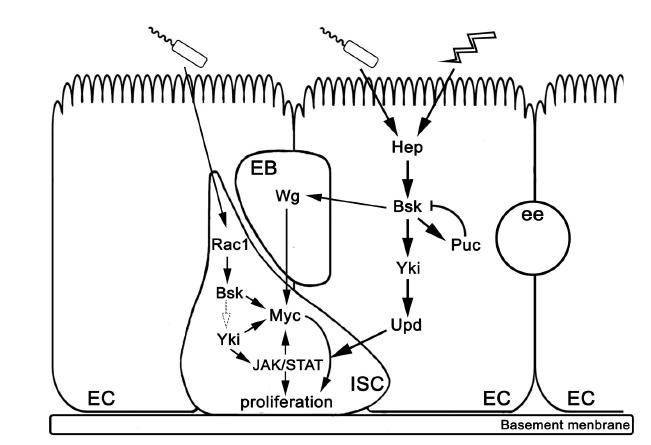
 DownLoad:
DownLoad: 